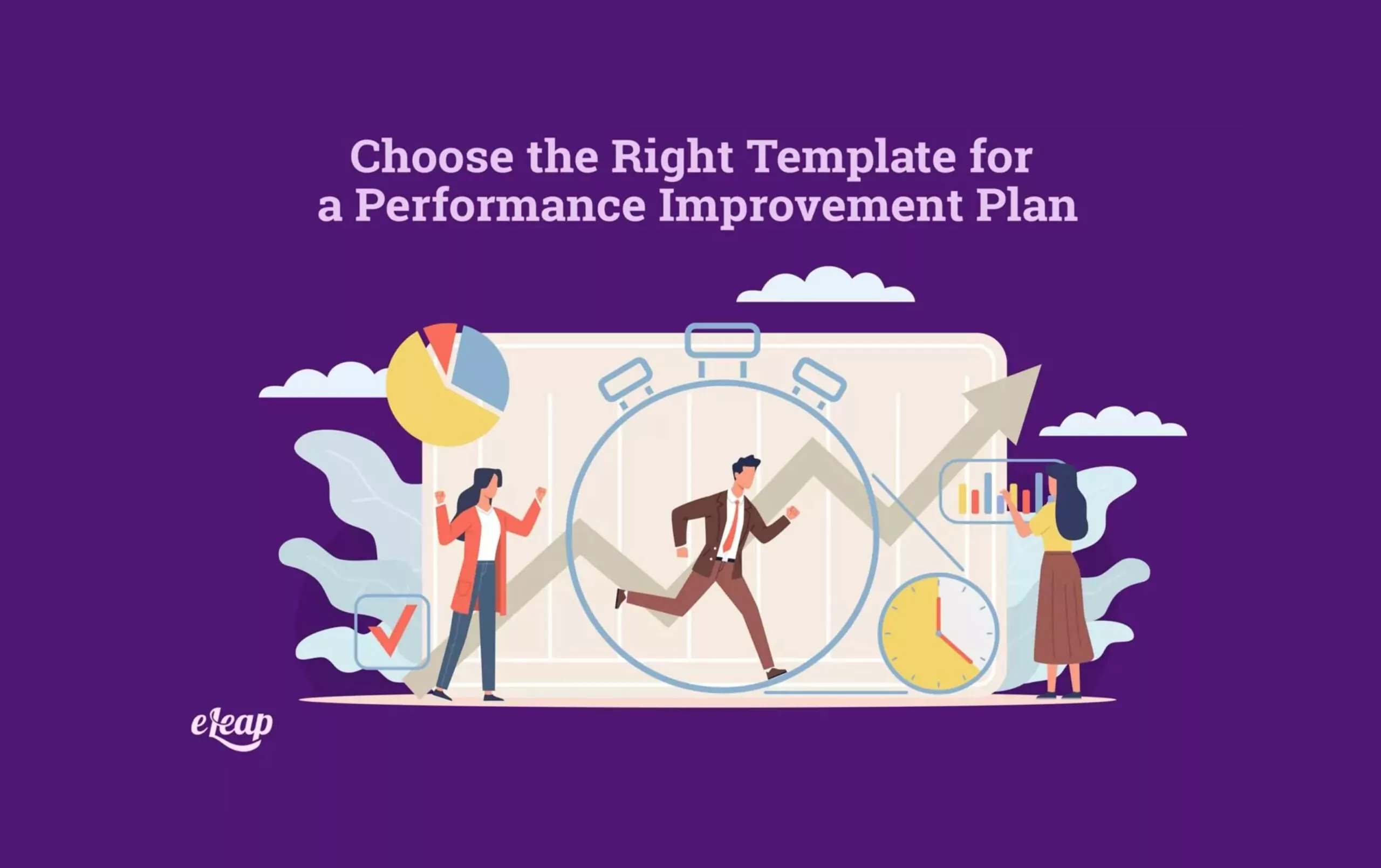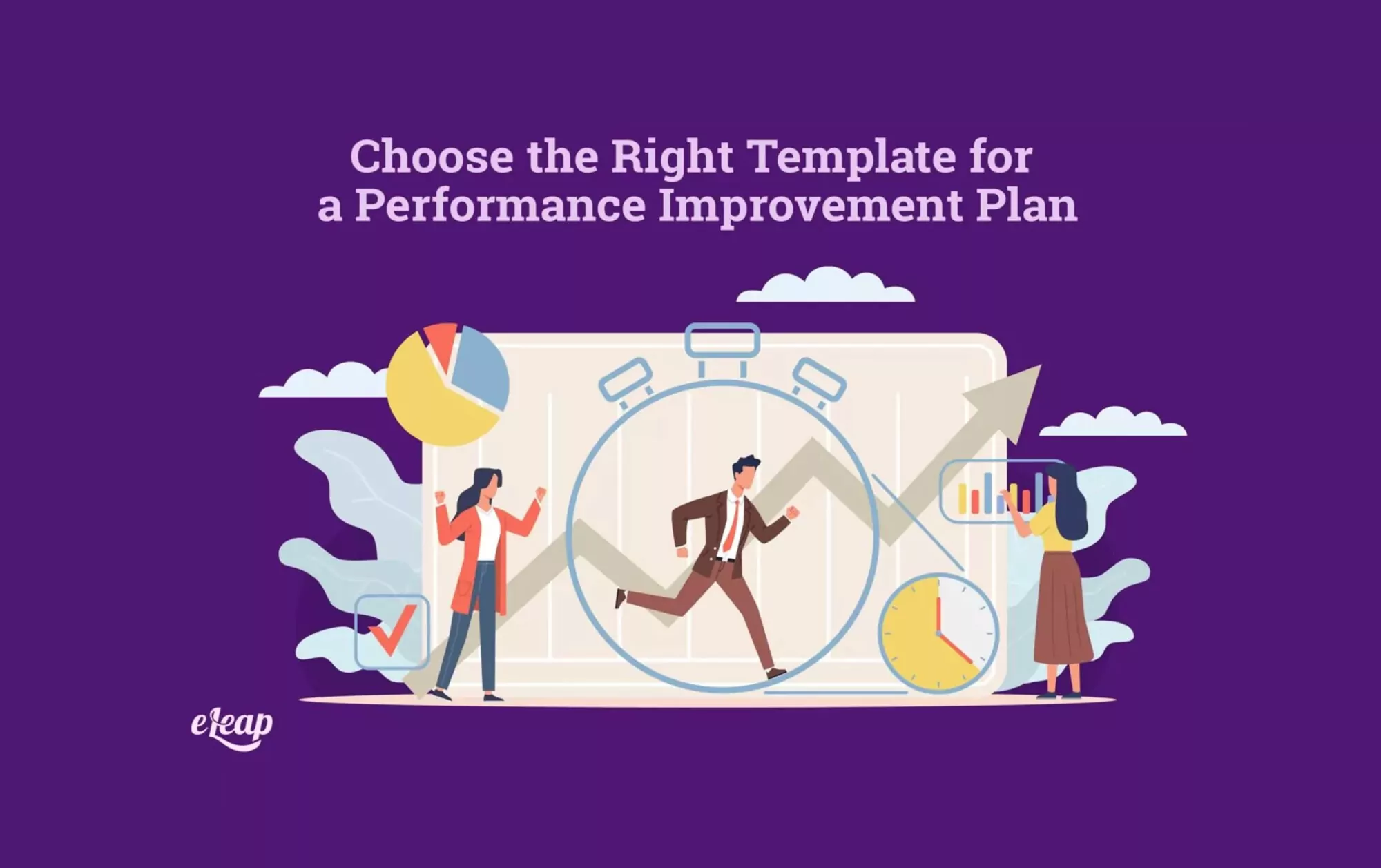Choose the Right Template for a Performance Improvement Plan

A template for a performance improvement plan is a tool that can make creating a PIP easier for managers. These types of templates could be used to help companies who have employees that need to improve. The templates can help them to take actionable steps that will help them improve in their jobs. Below, you’ll learn more about what these plans are and why they are important, and why you need to choose the right template.

What Is a Template Performance Improvement Plan?
Performance improvement plans are essentially motivational tools. They can provide a range of actionable and individualized steps for employees to follow to meet various performance goals. Whenever you have an employee who is not meeting certain performance standards, you may want to use one of these plans as a means to help them improve and then meet or exceed the requirements.
Performance reviews and performance improvement plans tend to be private. The managers will want to meet with employees individually when giving them their performance reviews or discussing any actions for improvement that need to be taken. If you need to create a PIP, it could be done with the team member, so you can create a plan for them to follow that is reasonable and that has goals they can achieve.
These types of plans should be implemented for every type of business, as they can be very useful.
When Should You Consider a Performance Improvement Plan?
Sometimes, you won’t need to use a performance improvement plan on an employee. Simply talking with them and letting them know about the problem will be enough for them to correct their mistakes. However, that’s not always the case. There will be times when one of these plans will be needed.
When should managers opt to introduce one of these types of plans? Generally, they can be helpful in cases where a team member continues to have performance problems. The plans can provide them with the guidelines they need to follow to be on the right track. If they have had the training and have had any necessary accommodations, and they haven’t improved, using one of these plans could help.
One of the benefits of the performance improvement plan is that it’s better than other alternatives. Some companies don’t give their employees a chance to improve. If they make a mistake, they are fired. Although employees might not be fond of having to follow a performance improvement plan, it tends to be a better choice than getting fired.
Before Using PIP Plans
Be prepared for defensive employees. The goal of a performance improvement plan is to help your employees thrive, but that’s not the way they always see it. Sometimes, they get upset because they don’t like to be told they are not performing up to standards. It’s hard to hear for people, even when they might know it to be true.
Therefore, you will want to approach using these plans carefully. Make sure the employees know that you aren’t using the plans as punishment or to pick on someone. The plans should be anonymous. Only the manager and the employee need to know they are on the plan.
When talking with the employees and putting them on the action plan to improve, listen to what they have to say. Sometimes, managers are looking at problems from a different perspective. They aren’t in the proverbial trenches and dealing with issues that could be causing problems or slowdowns. Actively listen to what employees are saying. You might find that it’s less of a problem with the employee and more of a problem with the procedure they have to perform.
Stay positive and work to find the root cause of the problem. Once you find that, it is often a lot easier to work with the employee and find a path forward to success. As the employee makes progress, congratulate them on their journey.
What Should the Performance Improvement Plan Include?
When choosing or creating a template for a performance improvement plan, you will want to be sure it has all of the elements and sections you will need. Let’s look at some of the types of elements that should be in most plans.
First, there is the expectations statement. This could be as simple as a standardized statement of what your company expects from a team member. However, it might be more detailed and specific to each case. This lets the employee know what was expected of them in their role.
The performance improvement plan should also make sure to highlight the performances of the team member in comparison to what’s expected of them in their job. Additionally, the PIP is not simply a place to complain about the employee. Therefore, it needs to have an action plan that the employee can follow as a means to improve. Then, there need to be follow-up meetings done to see if improvements have been made or not.
If there have been improvements, that’s great. It means the plan is working as intended. Continuing to follow through with the plan should get the employee back to where they should be. Of course, there may be times when there aren’t improvements seen, and this needs to be addressed. What happens then?
There need to be consequences in the event the performance improvement plan did not work, and the employee is still having trouble. What happens next is up to you. All circumstances are different. You need to make sure they understand whether it could lead to more training or even termination.
Writing Out the Performance Improvement Plan
When creating a performance improvement plan, you will want to make sure you have defined what you expect of the team members. You should have a list of the team members, problem areas, and the potential root causes of those problems. If you notice that several of the team members are having issues that are similar, it might be a matter of ineffective training earlier in the pipeline. You will want to address this problem and correct it at the source.
It is the job of the manager to create action plans for their employees to get them back on track. Keep in mind that even though employees might have similar issues, there may be different approaches they will need to take. This should be considered when adjusting the PIP.
You will also need to create a follow-up schedule for the action plan. Create some progress milestones and some check-ins along the way. These milestones give you and the employee a good way to gauge how things are going.
Also, you can’t have consequences without first letting your team know what happens if they don’t follow through and improve. Make sure the consequences are clear, so they understand what is at stake. However, you never want to threaten an employee. After all, your goal as the manager should be to help them get back on the path to success.
Once you have a performance plan template that you like, you can keep using it for a while. Just keep in mind that as there are changes within the company or within the role, certain elements of the template will need to change, too.
Stay on Top of the PIP Objectives
These plans require that a team member takes certain actions to ensure they are performing on par with the rest of the crew. As mentioned, there will be certain goals, milestones, or deadlines that they are likely going to have to follow for their action plan. Not only should the employee keep track of the milestones, but so should their manager. Make sure they are held accountable for deadlines and regularly monitor their progress.
It can be difficult to remember all of this on your own, especially if you have a lot of employees. You can make things easier on yourself when you use different apps or tools to keep track of the progress of the PIPs. Even setting up simple alerts on the computer for the next meeting will be helpful. You will want to send out an early reminder to the employee, as well.
Which PIP Template Is Right?
There are countless performance improvement plan templates available, and some might be usable for your business right out of the gate. When choosing a template, make sure you consider what the employee needs to improve. If you can’t find an “ideal” template, you may need to make one of your own that you can continue using for your organization.
However, you may find that not all of the templates will work well for your business as they are. In these cases, you might need to create a new template suited specifically for your employees and business. One of the nice things about performance improvement plans is that you can find a template you like and then you can customize it until it is perfect for your needs. The eLeaP continuous performance management system provides organizations with powerful options to attract and retain high caliber team members.